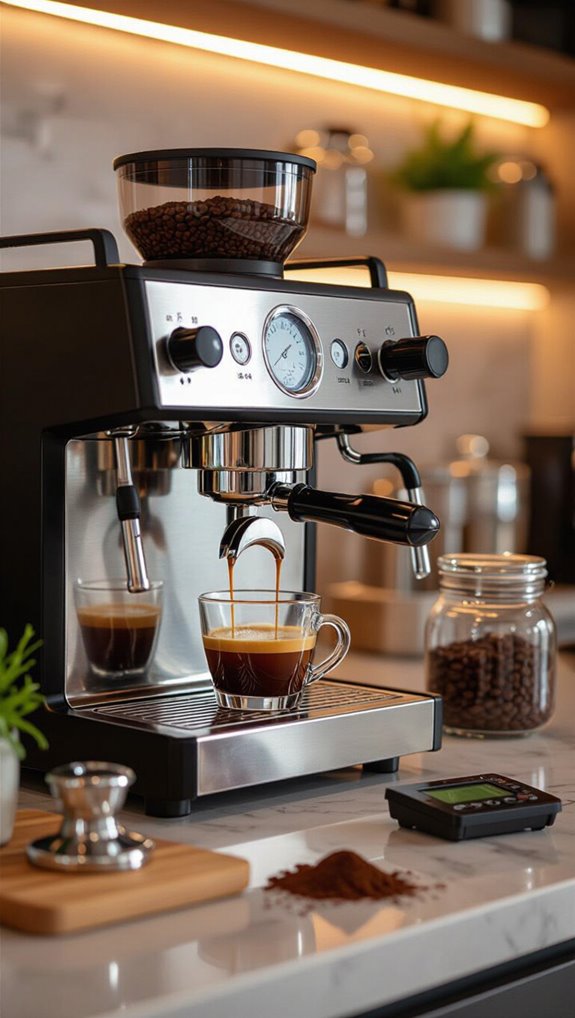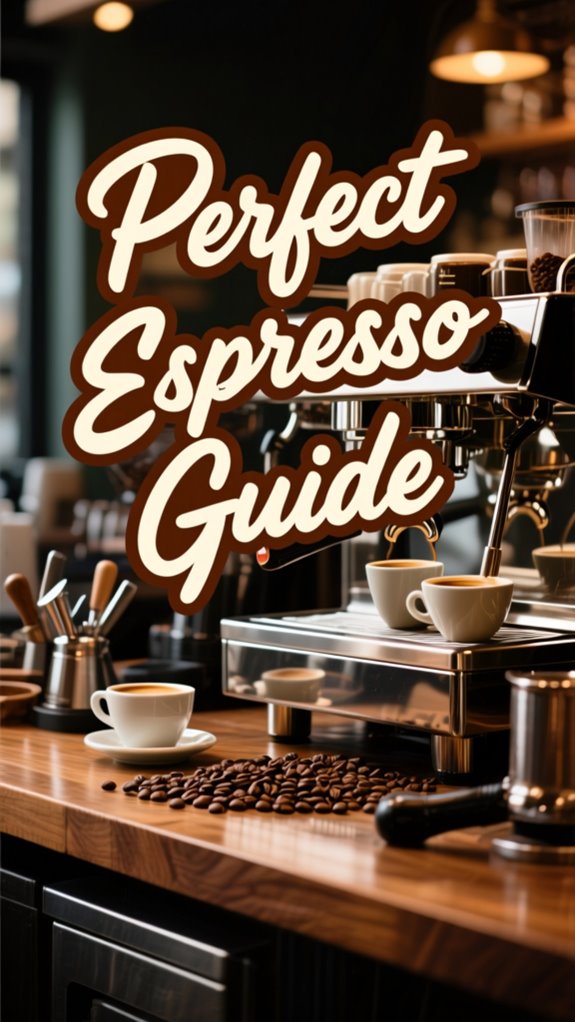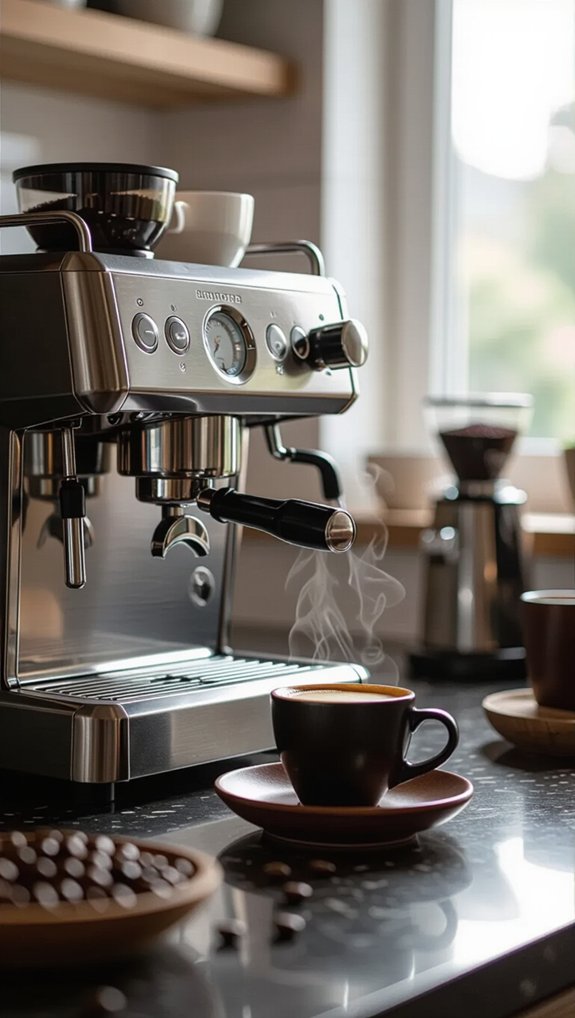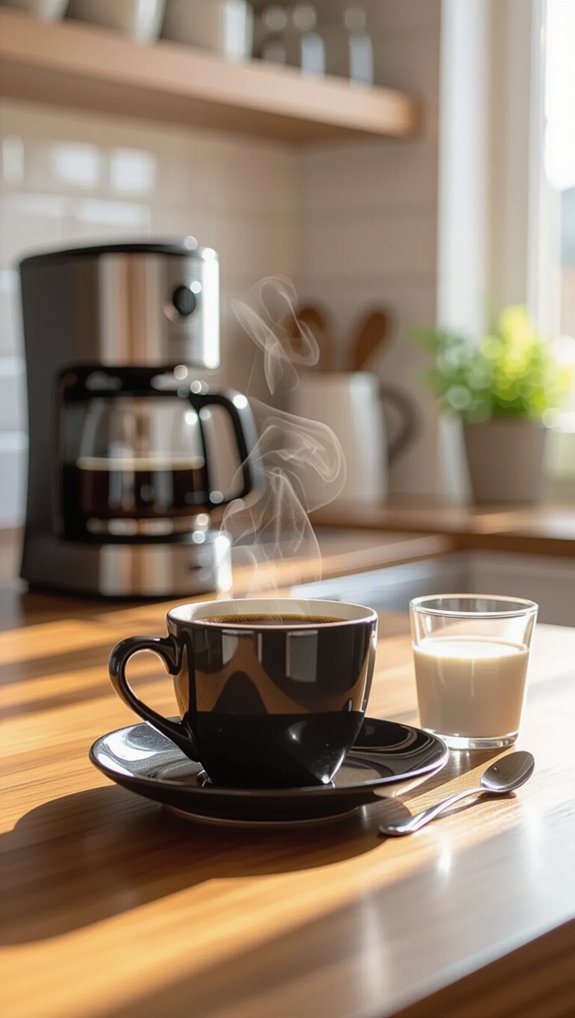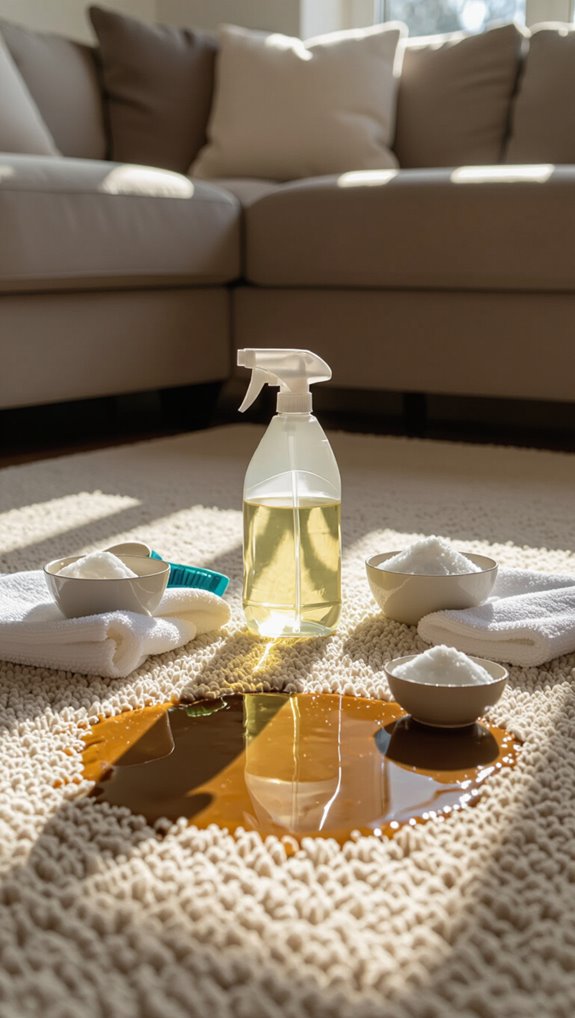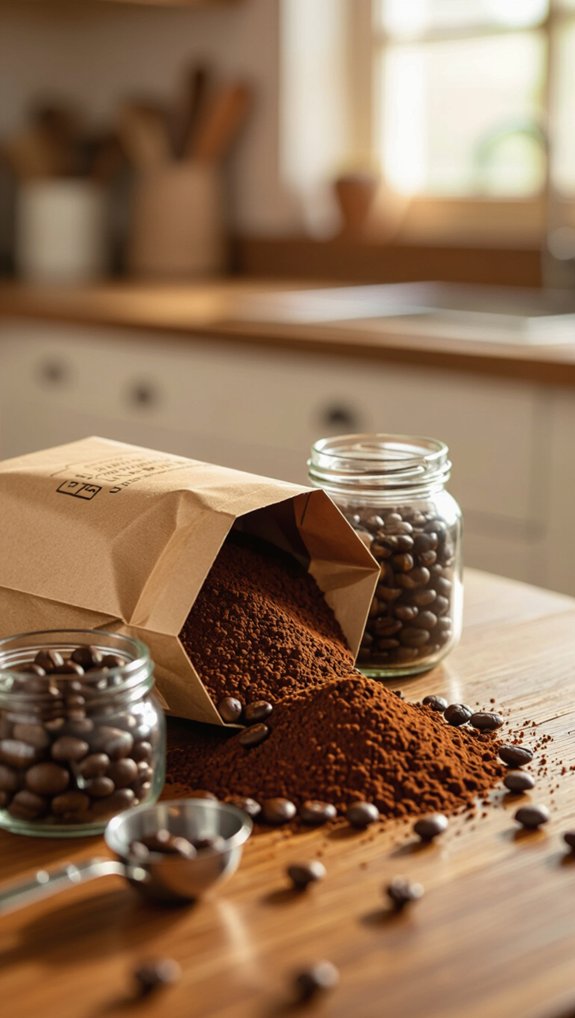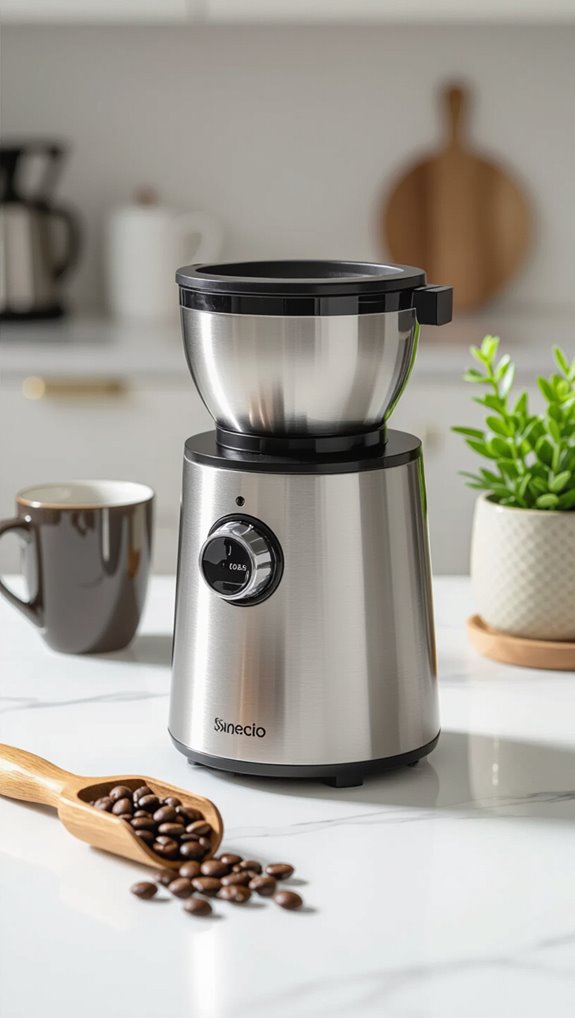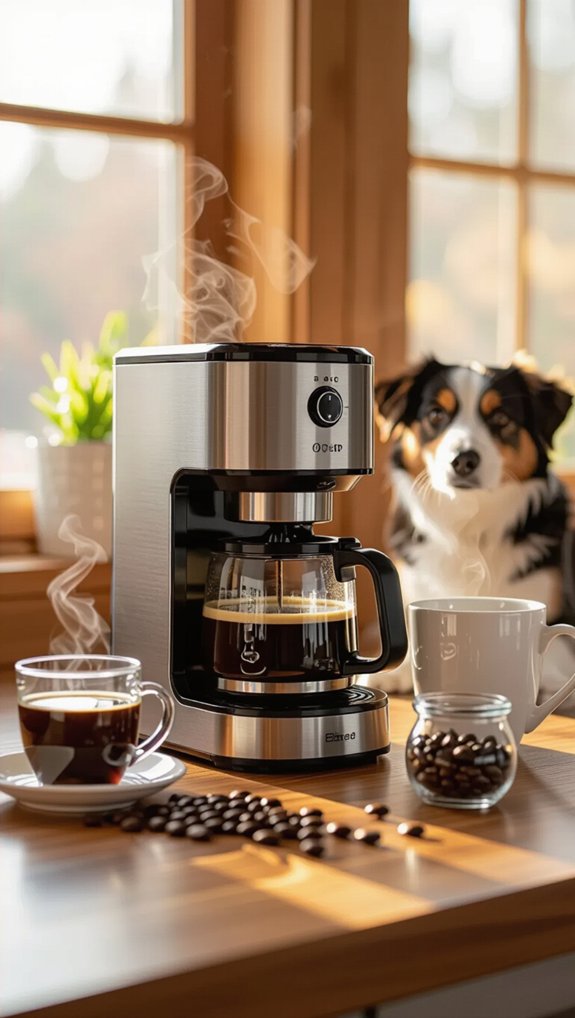Have you ever wondered why your home espresso never quite matches café quality? The secret lies in mastering three critical variables: grind, dose, and yield. Most home brewers struggle with inconsistent shots—sometimes bitter, sometimes sour, rarely hitting that perfect balance of sweetness and intensity.
In this guide, I’ll walk you through the exact techniques professional baristas use to dial in the perfect espresso shot. You’ll learn how to adjust your grind size for optimal extraction, measure the precise dose for your portafilter, and calculate the ideal yield for a balanced cup. By the end, you’ll have the knowledge to consistently pull café-quality espresso shots that showcase the true character of your beans.
Table of Contents
How to make the perfect espresso
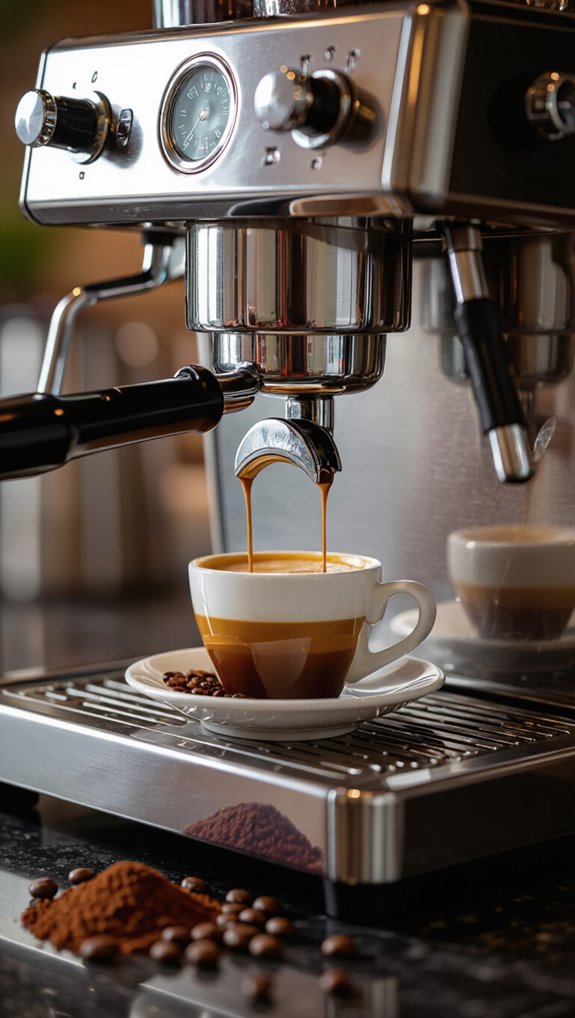
When you’re ready to craft the perfect espresso, you’ll need to gather the right ingredients, choose quality equipment, and follow precise instructions.
Your journey starts with selecting fresh, high-quality coffee beans and investing in a reliable espresso machine and grinder.
I’ll walk you through the essential steps to transform those beans into a rich, aromatic shot of espresso that’ll elevate your coffee experience.
Ingredients
Crafting the perfect espresso begins with grasping its foundational ingredients. Fresh coffee is your starting point, with whole beans roasted 3-21 days prior ensuring maximum flavor potential. Selecting the right grind size, dose, and yield transforms an ordinary brew into an extraordinary experience.
| Ingredient | Quality | Impact |
|---|---|---|
| Beans | Freshly Roasted | Flavor Complexity |
| Water | Filtered | Extraction Clarity |
| Grind | Fine, Consistent | Even Extraction |
| Dose | 16-18g | Balanced Crema |
Understanding brew ratio—typically 1:2—helps you control espresso’s intensity. Weighing ingredients precisely, you’ll create a repeatable, delicious shot that captures coffee’s nuanced essence.
Equipment
Unlock the art of espresso-making with the right equipment, your gateway to brewing perfection. A precise burr grinder is crucial for consistent grind quality, allowing you to dial in your dose with precision.
Your portafilter and basket size matter—I recommend a 58 mm portafilter with a matched double basket that can handle 16-18 g of coffee. Invest in a 0.1 g-accurate scale to measure your dose and yield consistently.
Clean, well-maintained tools are your secret weapon: regularly calibrate your grinder, clean burrs, and ensure even ground distribution for that perfect shot every time.
Instructions
With the right equipment set up, you’re now ready to transform those carefully selected beans into liquid gold.
Start by weighing your dose precisely—I recommend 17g for a classic 1:2 brew ratio. Adjust your grind setting to target a 25-30 second shot time, making small, incremental changes.
Distribute the grounds gently, then tamp with consistent, level pressure.
Flush the group head, lock in the portafilter, and pull your shot. Watch the liquid’s color—stop when it becomes pale to avoid over-extraction.
Taste, then fine-tune by adjusting dose or grinding finer for that perfect balance.
What grind size for perfect espresso
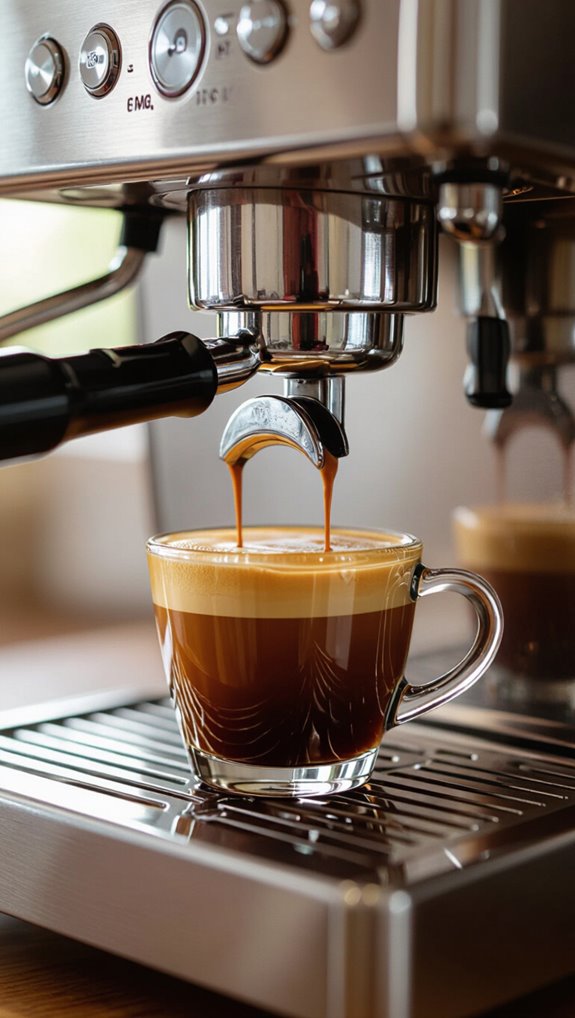
Because espresso’s perfection hinges on precise grind size, home baristas must grasp how to dial in their settings with precision. Getting the right grind affects extraction time and overall flavor profile:
- Aim for a grind slightly coarser than powdered sugar
- Use a double basket with 17-20g dose for balanced extraction
- Adjust grind to maintain 25-30 second flow rate
- Match grind size to bean freshness and basket depth
Small, incremental adjustments are key. When you grind coarser, you’ll increase flow rate; when you grind finer, you’ll slow extraction. By grasping these principles, you’ll craft espresso shots that are consistently delicious and perfectly balanced.
Do coffee origins matter for espresso taste
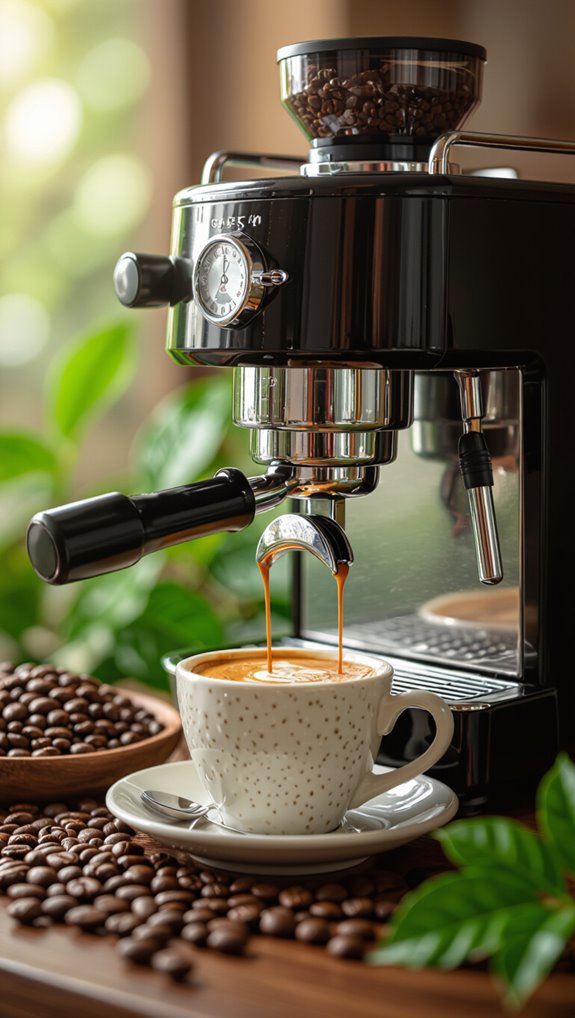
How dramatically can a coffee’s origin transform your espresso experience? Each region brings unique flavor profiles that dramatically influence your shot’s character. Origin isn’t just a label—it’s a flavor passport.
| Origin | Processing | Typical Flavor Profile |
|---|---|---|
| Ethiopia | Natural | Fruity, complex |
| Brazil | Natural | Nutty, sweet |
| Colombia | Washed | Balanced, clean |
| Kenya | Washed | Bright, citrusy |
| Guatemala | Honey | Chocolate, caramel |
Dial in grind, dose, and yield
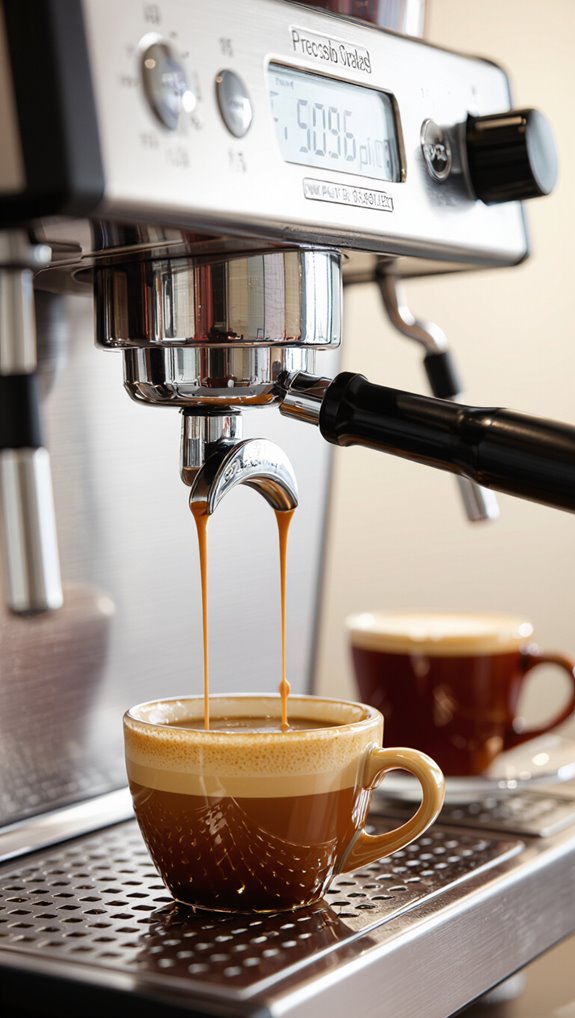
Since espresso is part science, part art, dialing in your shot requires precision and patience.
Mastering the perfect espresso means grasping the delicate balance between dose, grind, shot time, and yield.
- Start with a consistent 17g dose for a balanced extraction
- Adjust grind size to control shot time (25-30 seconds)
- Target a 1:2 ratio of coffee to espresso yield
- Taste and iterate, fine-tuning based on flavor profile
Why water temperature matters for espresso
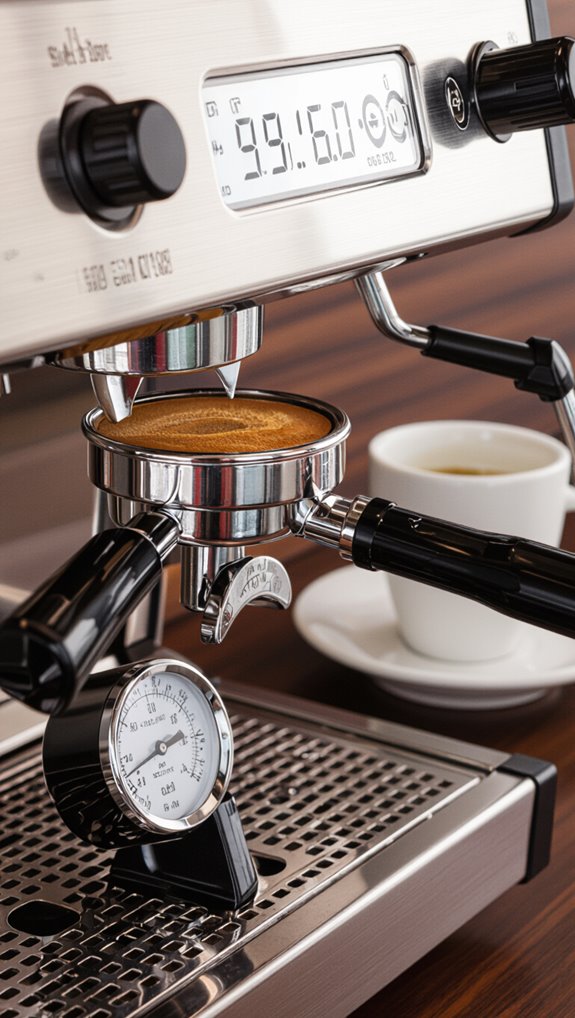
After fine-tuning your grind, dose, and extraction time, water temperature emerges as the next critical variable in crafting the perfect espresso shot. The sweet spot typically sits between 90–93°C, where acidity and sweetness beautifully balance. Temperature stability matters immensely—even ±1–2°C fluctuations can dramatically alter extraction and flavor profile.
Different roast levels demand nuanced approaches: lighter roasts benefit from slightly higher temperatures to extract sugars, while darker roasts require cooler water to prevent excessive bitterness. By grasping how water temperature interacts with brew ratio, you’ll unlock more complex, refined espresso shots that showcase your beans’ true potential.
Tamping tips for consistent espresso extraction
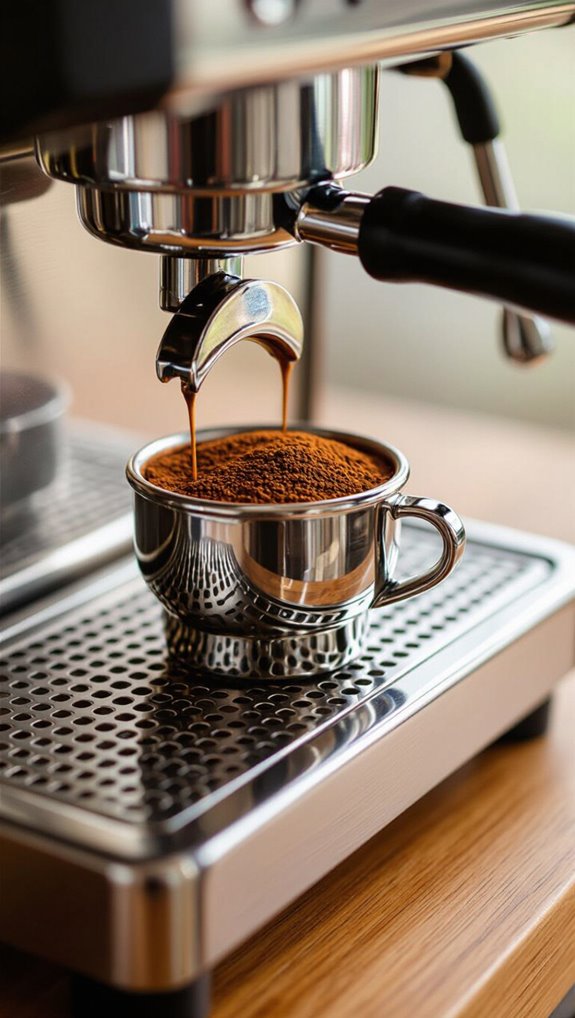
Nailing the perfect tamp can make or break your espresso shot, transforming an average brew into a sublime extraction. Mastering tamping requires precision and practice, focusing on key techniques that ensure consistent results.
- Match your tamper size exactly to the basket diameter
- Distribute grounds evenly before a single, steady tamp
- Apply uniform pressure perpendicular to the portafilter
- Polish with a gentle 1-2 mm twist after initial compression
Consistency is key. By maintaining the same technique—clean basket, precise distribution, and controlled tamping—you’ll dial in shots that showcase your barista skills and deliver rich, balanced espresso every time.
Bottomless portafilter pros, cons, and use
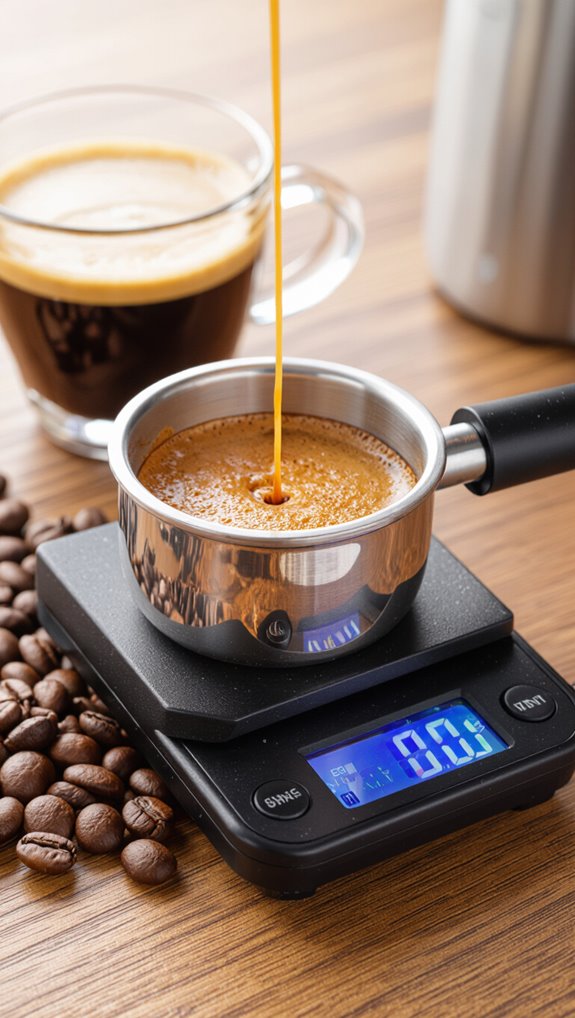
Mastering tamping sets the stage for exploring another game-changing espresso technique: the bottomless portafilter. This transparent tool lets you diagnose extraction issues in real-time by revealing every detail of your shot’s flow. You’ll instantly spot channeling, uneven distribution, or tamp inconsistencies through the exposed basket.
The key is maintaining a flat, level tamp to prevent coffee spray and ensure symmetrical streams. While it demands precision, a bottomless portafilter rewards you with amplified crema and deeper insights into your brewing technique. Just remember: wear an apron, keep hands clear, and clean immediately after each pull.
What machine and grinder should I buy
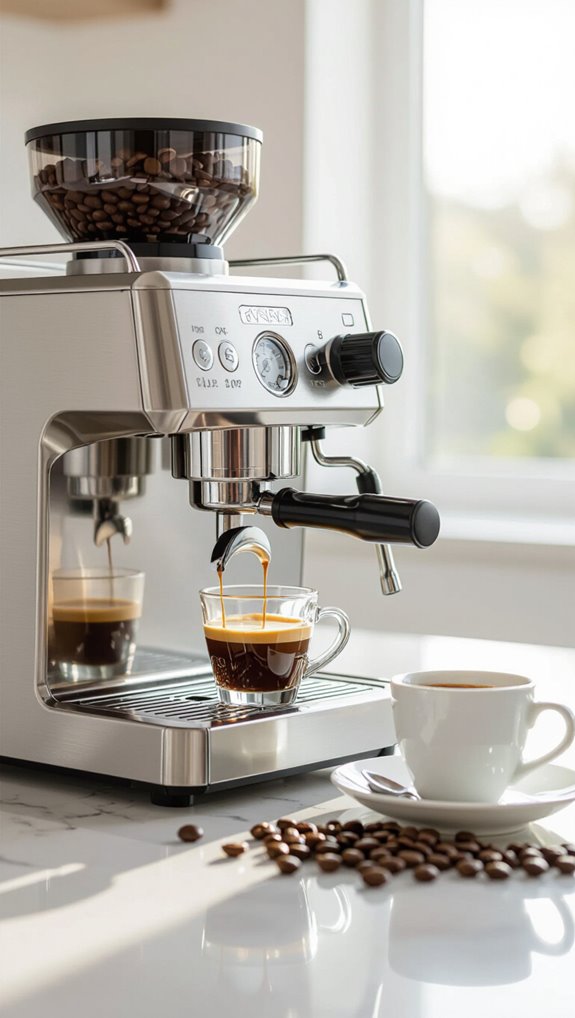
Dive into the world of home espresso with a strategic approach to selecting your machine and grinder. Your espresso journey depends on smart equipment choices that balance performance and budget.
- Prioritize a PID-controlled machine with 15–18 bar pressure for temperature stability
- Invest in a high-quality grinder with low grind retention first
- Choose a 58mm commercial-style portafilter for consistent extraction
- Select equipment supporting your typical dose (16–18g double basket)
A precise grinder matters more than an expensive machine. Focus on consistent particle distribution, minimal retention, and accurate dosing to elevate your home espresso experience.
Milk frothing for cappuccino and latte art
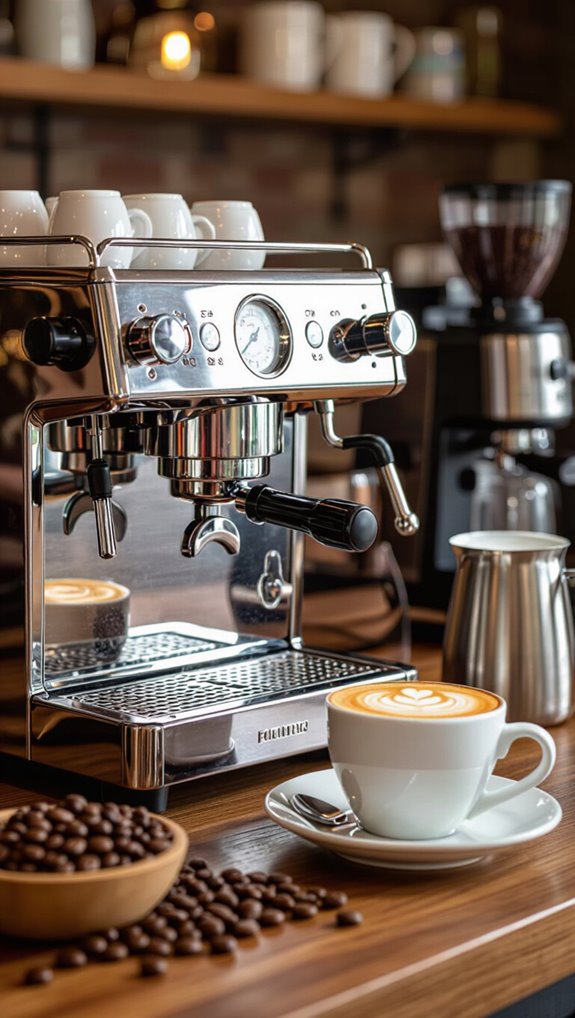
After selecting your espresso machine and grinder, you’ll want to elevate your coffee craft by perfecting milk preparation—the art that transforms a simple shot into a creamy cappuccino or stunning latte.
Master your steam wand technique by creating microfoam through gentle aeration and a tight whirlpool motion. Whole milk delivers the best texture, heating to 55–65°C for ideal consistency. Position the wand at a 15–30° angle, just below the surface, and tap your pitcher to eliminate large bubbles. Your goal? A glossy, paint-like milk that pours smoothly and creates beautiful latte art.
Troubleshooting bitter or sour espresso shots
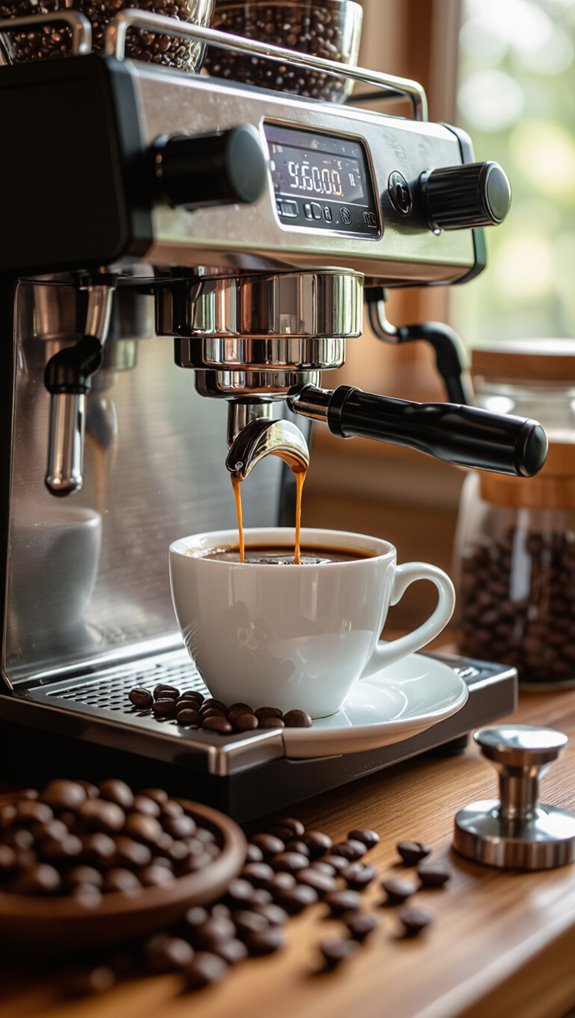
While espresso brewing might seem like a precise science, even experienced home baristas can encounter flavor challenges that leave their shots tasting bitter or sour.
Mastering the perfect espresso requires comprehension of key variables:
- Adjust your grind size to control shot time and extraction
- Balance dose carefully to prevent under- or over-extraction
- Check water temperature between 90-96°C
- Minimize channeling through even tamping and distribution
When your shot tastes off, don’t panic. By methodically adjusting your grind, dose, and technique, you’ll dial in a balanced, delicious espresso that highlights the beans’ true flavor profile.
Frequently Asked Questions
How Long Does an Espresso Shot Take to Pull?
I pull my espresso shots between 25-30 seconds. Anything shorter feels under-extracted and weak, while longer pulls can taste bitter. The perfect extraction time ensures a balanced, rich shot with a beautiful golden-brown crema.
Can I Use Pre-Ground Coffee for Espresso?
I don’t recommend using pre-ground coffee for espresso. It quickly loses flavor and aroma, becoming stale. For the best shot, you’ll want to grind fresh beans right before brewing to ensure optimal taste and crema.
What’s the Difference Between Single, Double, and Triple Shots?
Single shots use about 7g of coffee, doubles use 14g, and triples use 21g. More coffee means more flavor and strength. I recommend starting with a double shot for balanced taste and caffeine kick.
How Much Caffeine Is in a Typical Espresso Shot?
A typical single espresso shot contains about 63 mg of caffeine. I’ll tell you that a double shot doubles this amount, packing roughly 126 mg of caffeine—perfect for a quick energy boost without overdoing it.
Why Do Some Espresso Shots Look Tiger-Striped or Mottled?
I’ve noticed tiger striping happens when uneven water pressure causes blotchy extraction. This occurs due to channeling in the coffee puck, where water finds weak spots and creates inconsistent flow across the espresso shot’s surface.
In Conclusion
Mastering how to make the perfect espresso through proper grind, dose, and yield takes practice, but the results are worth every effort. Remember that consistency is key—once you find your ideal ratios and technique, stick with them while making small adjustments as needed. The journey from bean selection to that final golden crema is what makes home espresso brewing so rewarding.
Whether you’re just starting out or looking to refine your skills, having the right equipment makes all the difference in achieving that perfect shot. Check out our coffee machine reviews to explore smart, well-reviewed options that can help you dial in those crucial grind, dose, and yield parameters with greater precision and consistency.
Your espresso journey is unique, so embrace the experimentation process and trust your palate. With the right technique, quality beans, and reliable equipment, you’ll soon be pulling shots that rival your favorite café.

